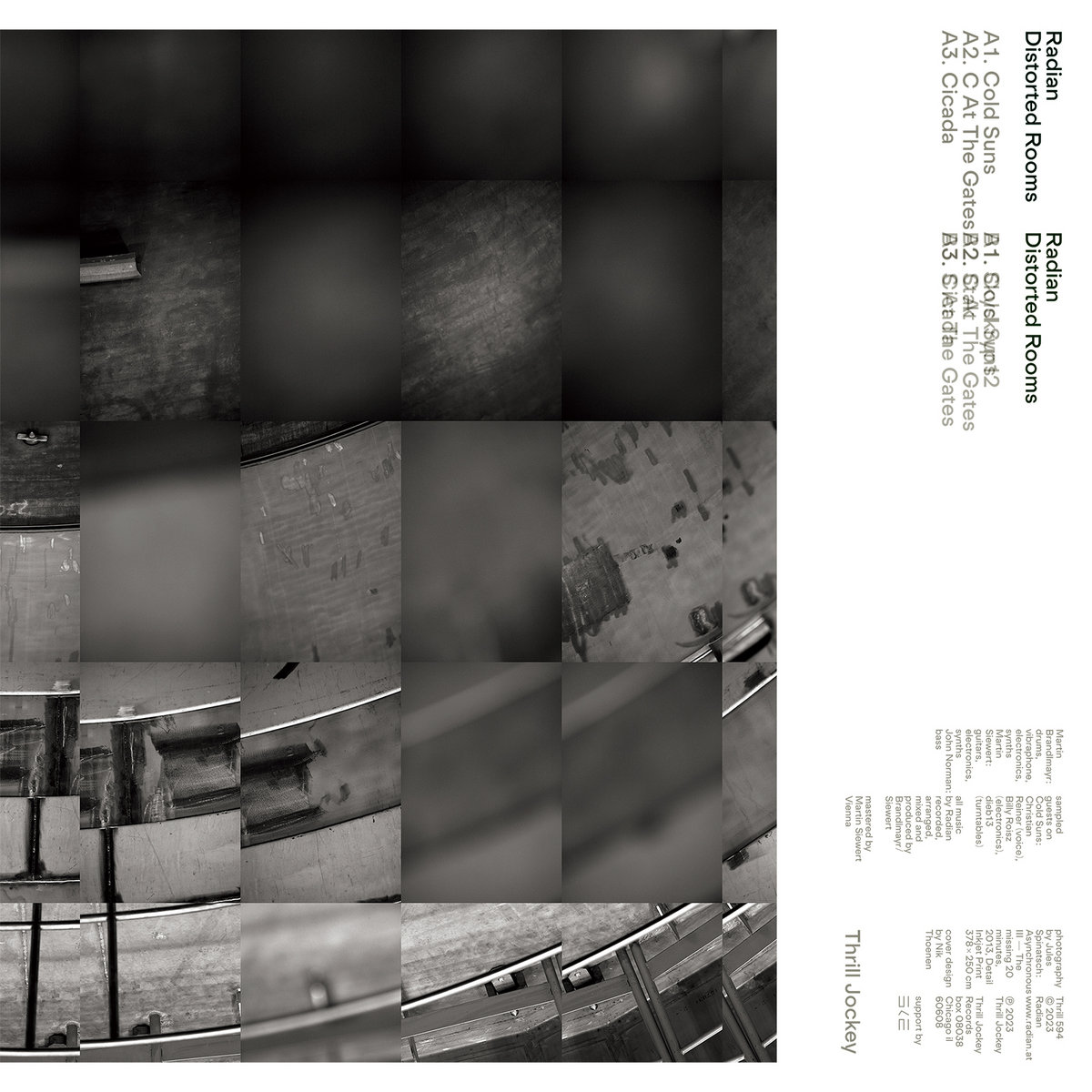 It has somehow been seven years since this long-running Vienna trio last surfaced with 2016's stellar On Dark Silent Off, but they seem to have spent that time diligently dreaming up innovative new ways to be amazing. In a general sense, Radian's vision is not a far cry from the austere, jazz-adjacent post-rock of their celebrated labelmates Tortoise. The magic of Radian, however, lies in the band's singular attention to detail and their quixotic compulsion to continually turn sounds upside-down in imaginative feats of dynamic sorcery. The overall effect is akin to that of dub techno being made by an incredibly tight live band, but the live aspect is quite illusory, as Distorted Rooms presumably sounds almost nothing like what the band originally recorded (in fact, the band themself note that one piece "eliminates nearly all traces of the original performance"). While many of the sounds do remain present in one form or another, Radian revels in celebrating and amplifying the barely audible and non-musical bits while also eliminating or burying the louder, more traditional "rock" tropes like chords and melodies. Obviously, The Dead C have made a fine career out of similarly deconstructing and inverting rock music, but Radian are the gleaming, precision-engineered opposite of Dead C's own shambling, spontaneous, and blown-out vision.
It has somehow been seven years since this long-running Vienna trio last surfaced with 2016's stellar On Dark Silent Off, but they seem to have spent that time diligently dreaming up innovative new ways to be amazing. In a general sense, Radian's vision is not a far cry from the austere, jazz-adjacent post-rock of their celebrated labelmates Tortoise. The magic of Radian, however, lies in the band's singular attention to detail and their quixotic compulsion to continually turn sounds upside-down in imaginative feats of dynamic sorcery. The overall effect is akin to that of dub techno being made by an incredibly tight live band, but the live aspect is quite illusory, as Distorted Rooms presumably sounds almost nothing like what the band originally recorded (in fact, the band themself note that one piece "eliminates nearly all traces of the original performance"). While many of the sounds do remain present in one form or another, Radian revels in celebrating and amplifying the barely audible and non-musical bits while also eliminating or burying the louder, more traditional "rock" tropes like chords and melodies. Obviously, The Dead C have made a fine career out of similarly deconstructing and inverting rock music, but Radian are the gleaming, precision-engineered opposite of Dead C's own shambling, spontaneous, and blown-out vision.
The opening "Cold Suns" was also the album's first single, but it is unclear if it was chosen because the band believed it to be one of the most perfect distillations of their vision or if they merely thought it was one of the album's more immediately gratifying pieces. I suspect the reason may be the latter, as the album's second single "Skyskryp12" features a similar level of comparatively heightened drama. For the most part, however, "Cold Suns" offers a fairly representative first impression of Radian's current direction: gently stuttering loops, killer drumming, and a remarkably minimalist palette of guitar sounds. Unlike many other songs on the album, however, it eventually coheres into a brooding and tense chord progression, which lands the piece in somewhere near the post-punk revivalism of Moin (at least until the bottom drops out for a lengthy outro of distorted vocals, smoldering distortion, whimpering synth quivers, and broken, skeletal drums). "Skyskryp12" has a roughly similar aesthetic, but with one key difference: after it collapses upon itself, it kicks back into gear and builds towards a darkly cinematic crescendo. While both pieces are admittedly enjoyable and satisfying, however, the album's strongest pieces tend to be the ones with a bit of a lighter touch.


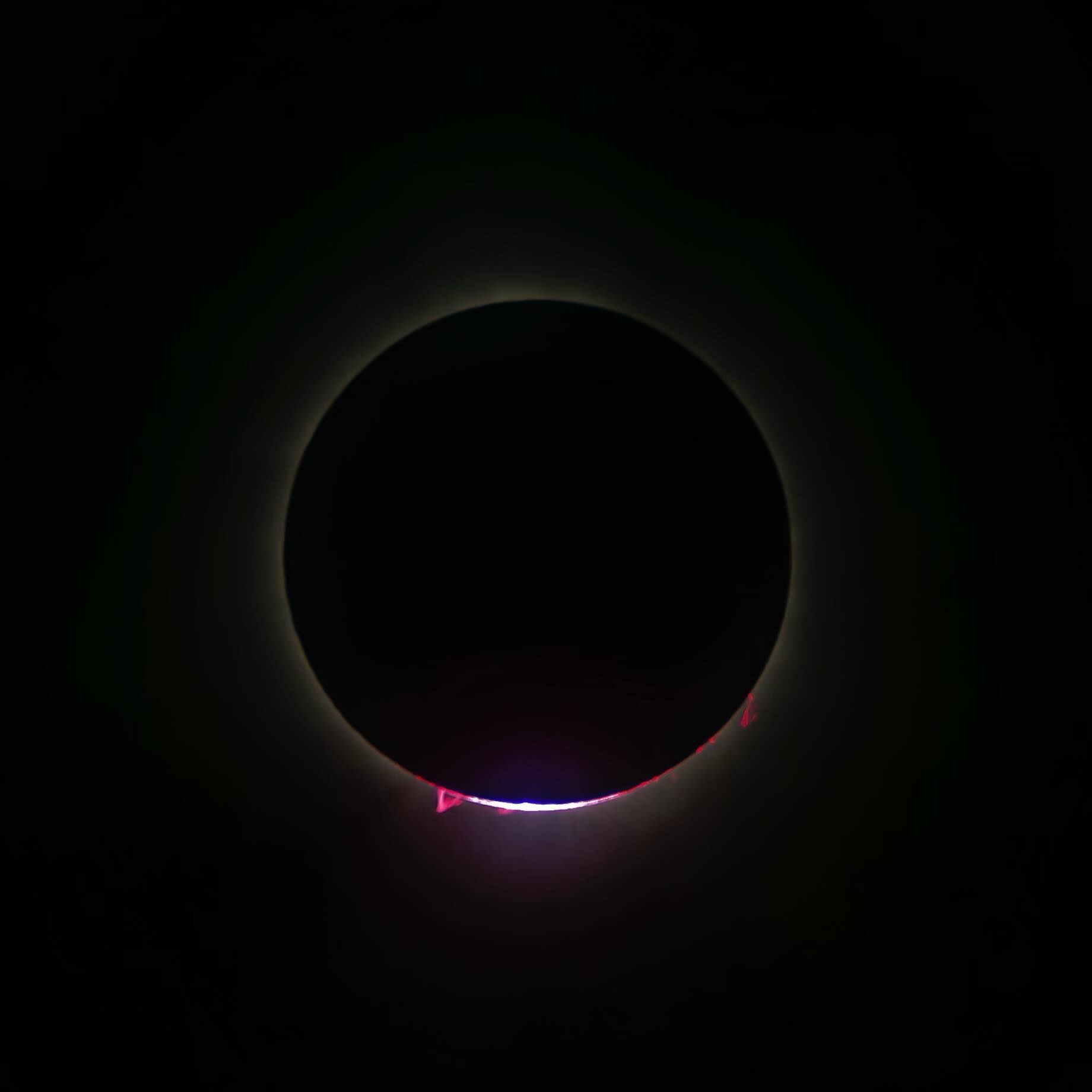
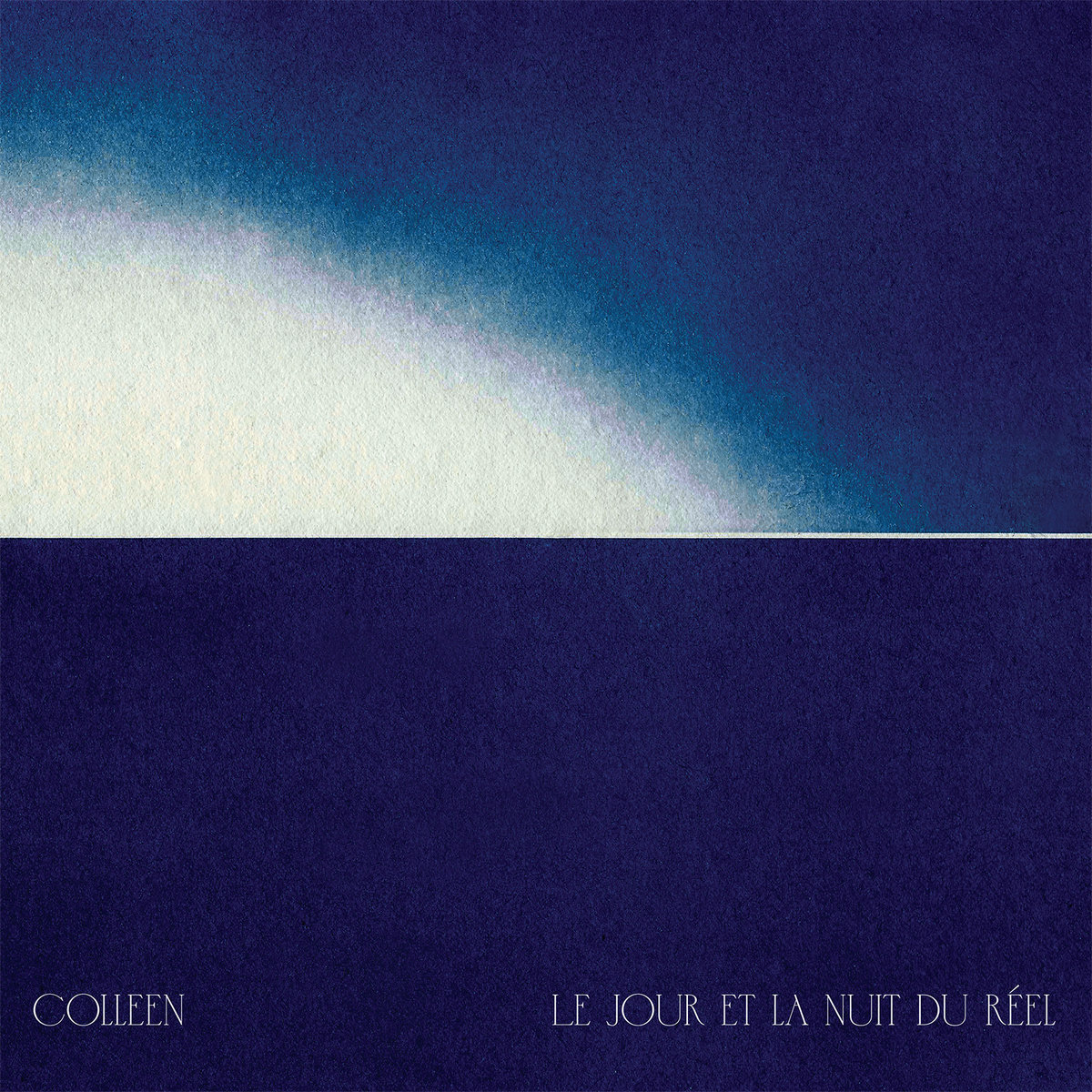 As someone who has loved Cécile Schott's work since 2003's Everyone Alive Wants Answers, I have long been fascinated by the various twists and turns that her vision has undergone over the years. While there have certainly been stretches in which she has lingered upon a vision for more than one album, Schott's creative restlessness invariably steers her into adventurous and unfamiliar territory eventually. As a result, Colleen's small discography is divided into an impressive number of distinct phases (the sample-driven collage era, the viola da gamba years, the synthesizer years, etc.). In a general sense, this latest full-length (her ninth) is a continuation her recent synthesizer phase, but it is also a significant break from her previous work in that vein: Le jour et la nuit du réel is seven-suite double album of minimalist vignettes exploring how a motif can be significantly transformed through the manipulation of synthesizer settings alone. Given the fundamental constraints of that vision, the album admittedly feels a bit less substantial than several of Colleen's previous releases, but connoisseurs of nuance and elegant simplicity will find much to love.
As someone who has loved Cécile Schott's work since 2003's Everyone Alive Wants Answers, I have long been fascinated by the various twists and turns that her vision has undergone over the years. While there have certainly been stretches in which she has lingered upon a vision for more than one album, Schott's creative restlessness invariably steers her into adventurous and unfamiliar territory eventually. As a result, Colleen's small discography is divided into an impressive number of distinct phases (the sample-driven collage era, the viola da gamba years, the synthesizer years, etc.). In a general sense, this latest full-length (her ninth) is a continuation her recent synthesizer phase, but it is also a significant break from her previous work in that vein: Le jour et la nuit du réel is seven-suite double album of minimalist vignettes exploring how a motif can be significantly transformed through the manipulation of synthesizer settings alone. Given the fundamental constraints of that vision, the album admittedly feels a bit less substantial than several of Colleen's previous releases, but connoisseurs of nuance and elegant simplicity will find much to love.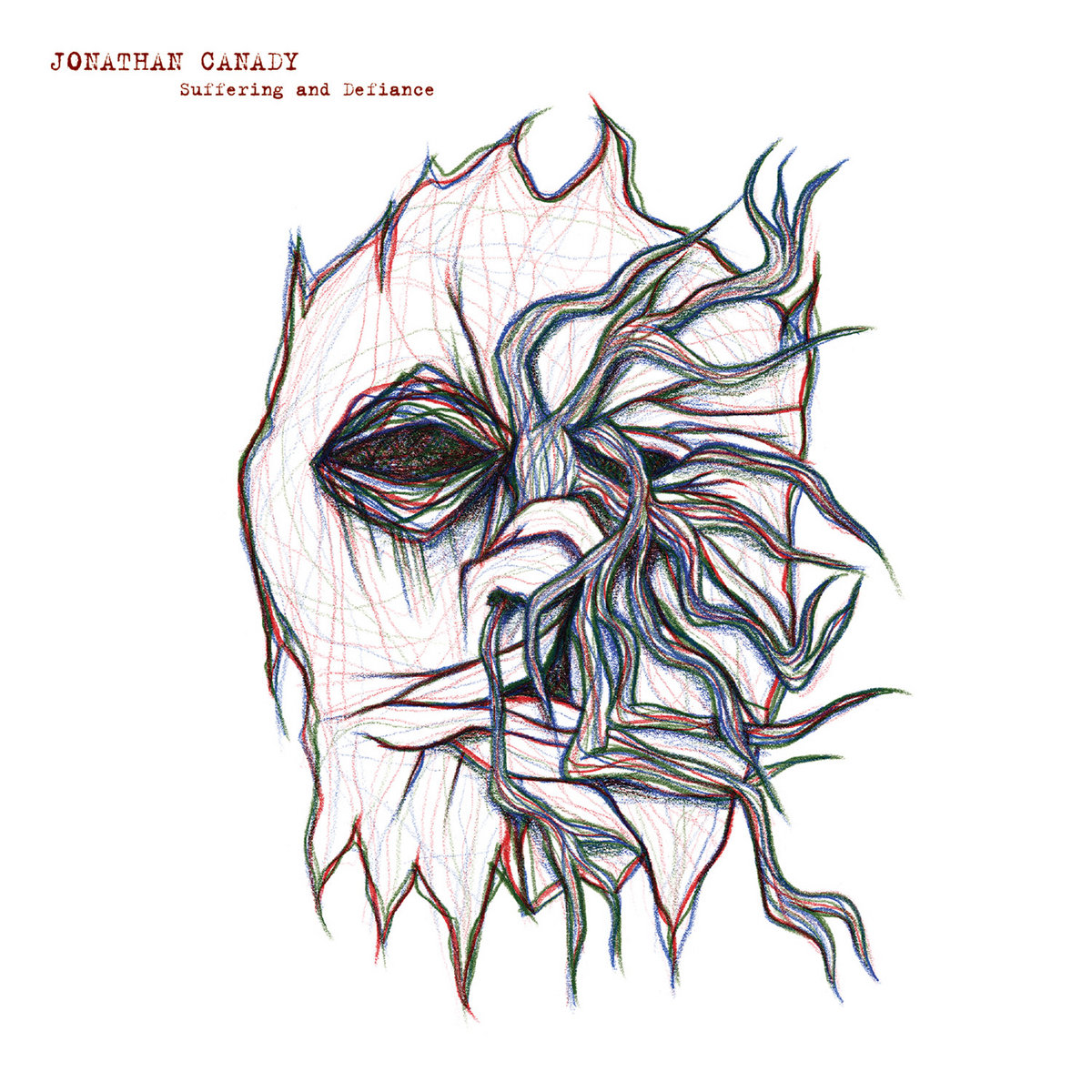 Well known for his time in Dead World, as a member of synth trio Nightmares, and his deactivated power electronics project Deathpile, Jonathan Canady has long been a pillar of the American noise world. Now working under his own name, he has recently entered the world of soundtracks and participated in an extremely limited collaboration with legendary artist John Duncan. Suffering and Defiance is his latest purely solo, purely audio work, and it loses none of the harshness he is known for, yet makes it clear his work is anything but harshness for the sake of harshness.
Well known for his time in Dead World, as a member of synth trio Nightmares, and his deactivated power electronics project Deathpile, Jonathan Canady has long been a pillar of the American noise world. Now working under his own name, he has recently entered the world of soundtracks and participated in an extremely limited collaboration with legendary artist John Duncan. Suffering and Defiance is his latest purely solo, purely audio work, and it loses none of the harshness he is known for, yet makes it clear his work is anything but harshness for the sake of harshness. This is a weird one. Billed as a film soundtrack—although I cannot seem to find any evidence of the film actually existing—this tape from enigmatic UK artist Grey Windowpane is all over the place as far as styles go. Free improvisation electronics, bedroom pop numbers, and random interludes are all scattered about this cassette. The lo-fi sound and production serve as a unifying factor on these 11 songs, giving an slight sense of continuity within the chaos.
This is a weird one. Billed as a film soundtrack—although I cannot seem to find any evidence of the film actually existing—this tape from enigmatic UK artist Grey Windowpane is all over the place as far as styles go. Free improvisation electronics, bedroom pop numbers, and random interludes are all scattered about this cassette. The lo-fi sound and production serve as a unifying factor on these 11 songs, giving an slight sense of continuity within the chaos.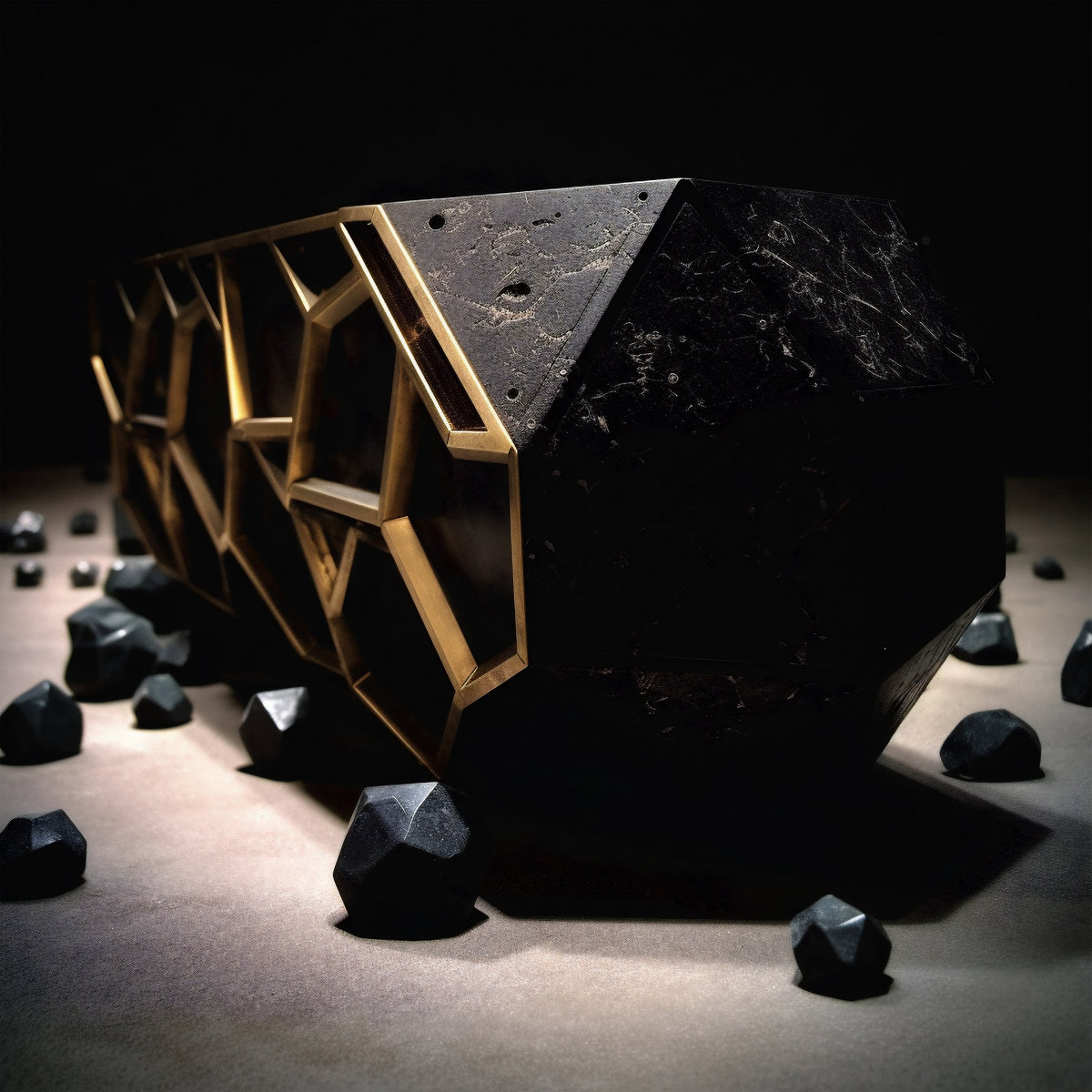 I enjoyed Nicol Eltzroth Rosendorf's gnarled, doom-soaked debut Big Other (2020) quite a bit, but I enjoyed it in a casual way and failed to truly grasp the full extent of his singular and ambitious vision. While that situation has thankfully been remedied by this latest opus, the music of Internal Return is just one piece of a much larger and more complex ambition that incorporates Jewish tradition, artificial intelligence, video art, and a uniquely disturbing visual aesthetic that resembles a vivid sci-fi nightmare that blurs together several dystopian cinematic futures at once. Curiously, when taken by itself, the music of Internal Return is more elusive and ambiguous than its more crushing and epic predecessor. When combined with Rosendorf's AI-created videos, however, Internal Return transforms into a viscerally unsettling mindfuck that will probably haunt me for weeks. As Rosendorf himself puts it: "It is not a comfortable place to be in, at least not exactly; like being adrift in an imageless dream, it produces monsters of a kind that, once they are receding into memory, we get the sense they were not actually terrifying, just... strange." Hopefully, those monsters will recede into memory for me soon, as I am still very much lingering in the "terrified" stage for now.
I enjoyed Nicol Eltzroth Rosendorf's gnarled, doom-soaked debut Big Other (2020) quite a bit, but I enjoyed it in a casual way and failed to truly grasp the full extent of his singular and ambitious vision. While that situation has thankfully been remedied by this latest opus, the music of Internal Return is just one piece of a much larger and more complex ambition that incorporates Jewish tradition, artificial intelligence, video art, and a uniquely disturbing visual aesthetic that resembles a vivid sci-fi nightmare that blurs together several dystopian cinematic futures at once. Curiously, when taken by itself, the music of Internal Return is more elusive and ambiguous than its more crushing and epic predecessor. When combined with Rosendorf's AI-created videos, however, Internal Return transforms into a viscerally unsettling mindfuck that will probably haunt me for weeks. As Rosendorf himself puts it: "It is not a comfortable place to be in, at least not exactly; like being adrift in an imageless dream, it produces monsters of a kind that, once they are receding into memory, we get the sense they were not actually terrifying, just... strange." Hopefully, those monsters will recede into memory for me soon, as I am still very much lingering in the "terrified" stage for now.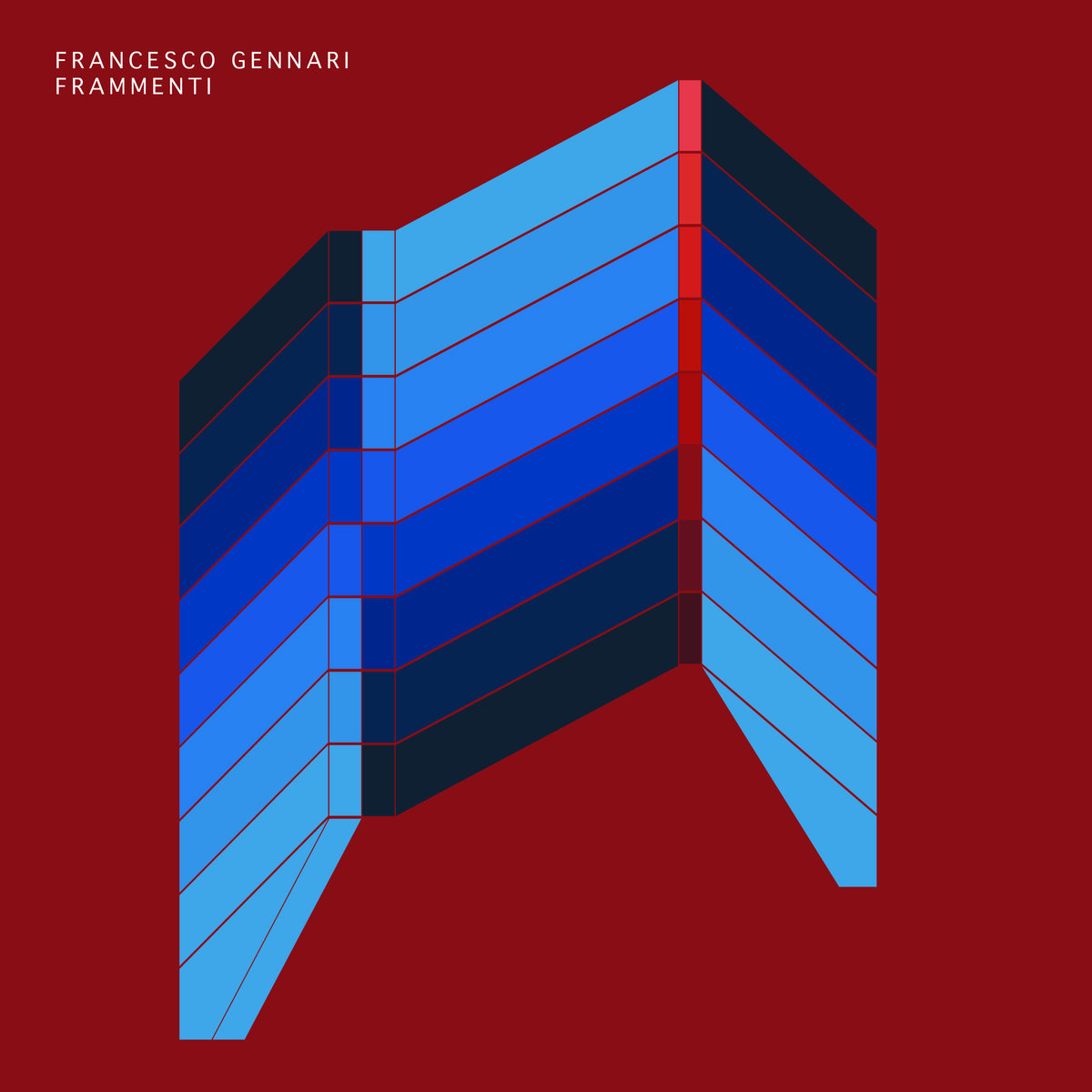 It is immediately clear from the opening piece "Preludio" that this is music composed with an unusually clear sense of structure and direction. As a classically trained pianist, Francesco Gennari has a solid grounding in music theory and he applies this knowledge to modular synths, with an authentic desire for experimentation and some serious chops; he can play. What elevates this debut recording even further is his ability to develop complex pieces from simple themes, while injecting energy and a sense of aggression and dynamics into his music.
It is immediately clear from the opening piece "Preludio" that this is music composed with an unusually clear sense of structure and direction. As a classically trained pianist, Francesco Gennari has a solid grounding in music theory and he applies this knowledge to modular synths, with an authentic desire for experimentation and some serious chops; he can play. What elevates this debut recording even further is his ability to develop complex pieces from simple themes, while injecting energy and a sense of aggression and dynamics into his music. These two singular artists have been fitfully playing together for roughly a decade now and they have released a number of albums documenting their incredible duo performances. Notably, their most recent union was for 2021's absolutely killer Made Out of Sound album, but that one was a bit of an aberration for the duo, as it was a studio creation crafted remotely. Happily, Play at Duke captures the pair back together on stage where they belong. The stage in question was unsurprisingly at Duke University, but the album's prosaic title omits a rather significant detail: the performance in question closed out Three Lobed Recording's 21st anniversary festival in appropriately riveting fashion. While both artists rank among my favorite musicians and have truly incredible chemistry as an improv unit, some performances are undeniably better than others and Play at Duke feels like an especially inspired night to me. Moreover, Orcutt and Corsano make a virtue of brevity as well, as there is not a single wasted note or even a hint of a lull in this 25-minute tour de force.
These two singular artists have been fitfully playing together for roughly a decade now and they have released a number of albums documenting their incredible duo performances. Notably, their most recent union was for 2021's absolutely killer Made Out of Sound album, but that one was a bit of an aberration for the duo, as it was a studio creation crafted remotely. Happily, Play at Duke captures the pair back together on stage where they belong. The stage in question was unsurprisingly at Duke University, but the album's prosaic title omits a rather significant detail: the performance in question closed out Three Lobed Recording's 21st anniversary festival in appropriately riveting fashion. While both artists rank among my favorite musicians and have truly incredible chemistry as an improv unit, some performances are undeniably better than others and Play at Duke feels like an especially inspired night to me. Moreover, Orcutt and Corsano make a virtue of brevity as well, as there is not a single wasted note or even a hint of a lull in this 25-minute tour de force. The Heartwood Institute creates memorable hauntological radiophonic doom-synth library folk music wherein traditional instruments from autoharp to zither are warped beyond identification, and blended into a barrage of synths and samplers, with film dialogue and nature sounds sprinkled in. Witchcraft is the subject matter of Pendle, and the album has a suitably spellbinding atmosphere, albeit one with the sense to emphasize grime and poverty. That's not to say there are not layers of sound which suggest cloudy pseudo-romantic myth, misty obscurity, and even smoke billowing up from a hexastein into some corridor of eternal purgatorial uncertainty where no one can hear your appeals for help, your moans or wails.
The Heartwood Institute creates memorable hauntological radiophonic doom-synth library folk music wherein traditional instruments from autoharp to zither are warped beyond identification, and blended into a barrage of synths and samplers, with film dialogue and nature sounds sprinkled in. Witchcraft is the subject matter of Pendle, and the album has a suitably spellbinding atmosphere, albeit one with the sense to emphasize grime and poverty. That's not to say there are not layers of sound which suggest cloudy pseudo-romantic myth, misty obscurity, and even smoke billowing up from a hexastein into some corridor of eternal purgatorial uncertainty where no one can hear your appeals for help, your moans or wails.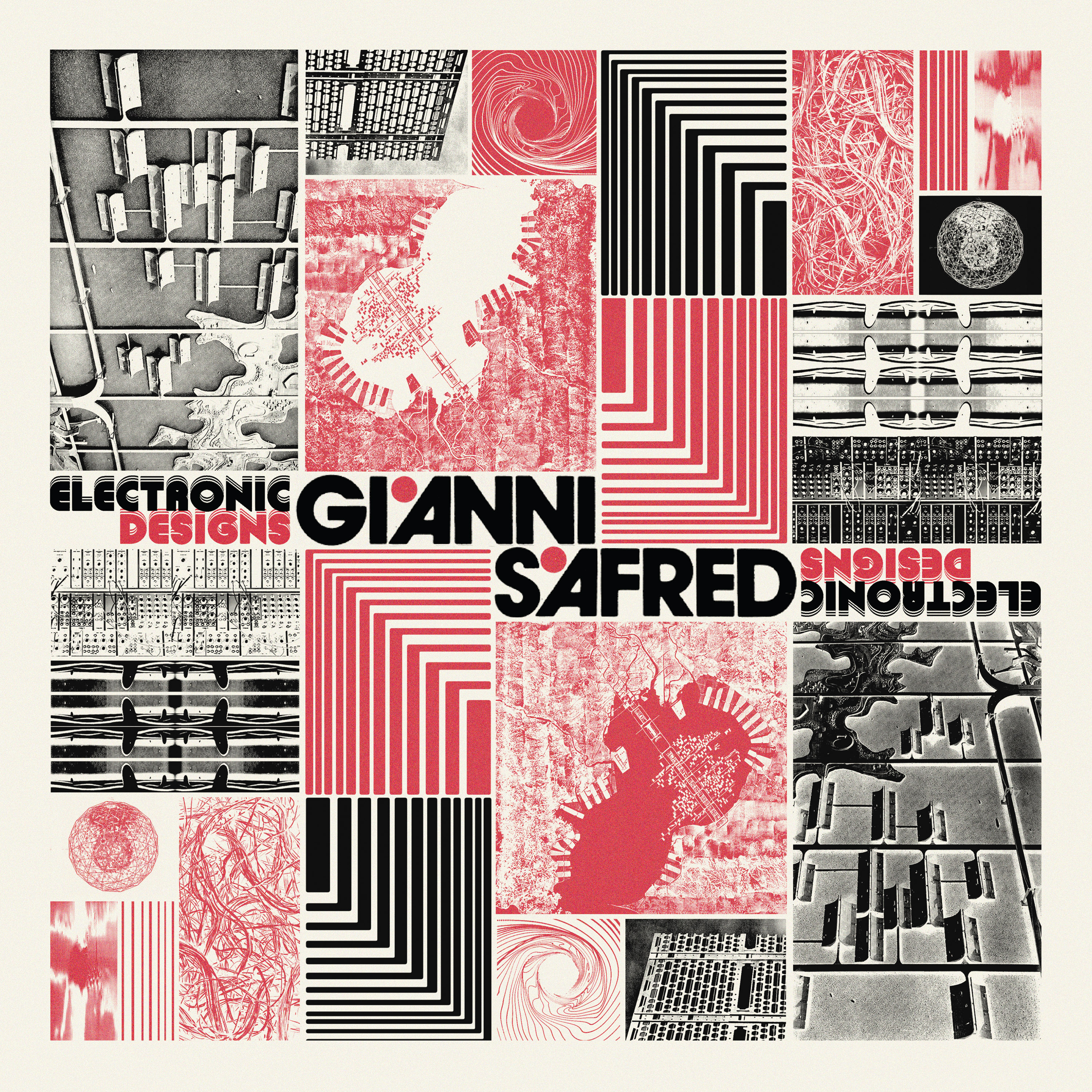 Electronic Designs was originally released in 1977 and it retains a weird and wonderful retro-futuristic atmosphere. By turns bizarre and swinging, wild and smooth, these recordings have a depth and an edge not always achieved in so-called library music. Younger glitch merchants can only hope to get close to the swing that Italian master Gianni Safred effortlessly knocks off on "Elastic Points." Then again, he did play with Django Reinhardt. This is a killer release with calculated, almost architectural, quality oozing out of every track. The cosmic melancholy of "Spheres'' is not unlike some of Basil Kirchin's more poignant compositions, such as "I Start Counting" while the frankly stunning "Planetarium" has Safred gradually unleashing an array of textural flourishes, as if imitating meteors or shooting stars amid a galaxy of stars and planets.
Electronic Designs was originally released in 1977 and it retains a weird and wonderful retro-futuristic atmosphere. By turns bizarre and swinging, wild and smooth, these recordings have a depth and an edge not always achieved in so-called library music. Younger glitch merchants can only hope to get close to the swing that Italian master Gianni Safred effortlessly knocks off on "Elastic Points." Then again, he did play with Django Reinhardt. This is a killer release with calculated, almost architectural, quality oozing out of every track. The cosmic melancholy of "Spheres'' is not unlike some of Basil Kirchin's more poignant compositions, such as "I Start Counting" while the frankly stunning "Planetarium" has Safred gradually unleashing an array of textural flourishes, as if imitating meteors or shooting stars amid a galaxy of stars and planets. While I am a fan of both DJ Python (Brian Piñeyro) and Ana Roxanne, a collaboration between the two is not something that I would have ever foreseen happening due to the substantial gulf between their styles. Unusual circumstances can lead to unexpected places, however, and the two mutual admirers found themselves both adrift and living in NYC in 2020 ("well-loved albums aside, no one was playing shows, and a general listlessness and disconnection prevailed"). As a result, the two finally met in person and soon began working on new music together ("studio experimentation was the instinctive extension of a friendship finding its feet"). Before they could finish an album, however, circumstances changed again and Piñeyro returned to the European club scene, while Roxanne toured the world and moved back to California.
While I am a fan of both DJ Python (Brian Piñeyro) and Ana Roxanne, a collaboration between the two is not something that I would have ever foreseen happening due to the substantial gulf between their styles. Unusual circumstances can lead to unexpected places, however, and the two mutual admirers found themselves both adrift and living in NYC in 2020 ("well-loved albums aside, no one was playing shows, and a general listlessness and disconnection prevailed"). As a result, the two finally met in person and soon began working on new music together ("studio experimentation was the instinctive extension of a friendship finding its feet"). Before they could finish an album, however, circumstances changed again and Piñeyro returned to the European club scene, while Roxanne toured the world and moved back to California.
